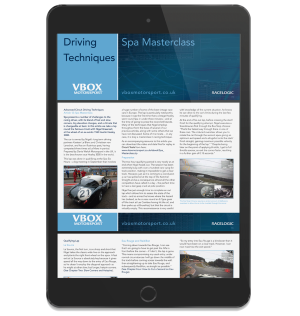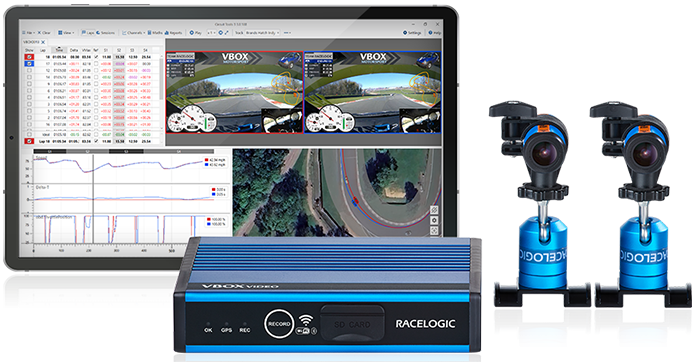Improving Lap Times
How video and data can help you cut your lap times
The goal in motorsports is always to go faster. Many thousands are spent on improving the performance of race cars with better suspension, more power, grippier tyres, or more complex electronics.
However, there is an area which can bring even greater rewards, for less money, but it is often overlooked. This area is driver training.
Why is driver training often overlooked?
Does a driver need help from data logging to improve driving technique?
Yes! Even the very best drivers in the world compare their data with teammates to go quicker.
For example, at Abu Dhabi, one of the very best F1 drivers in the world, Mark Webber, used Sebastian Vettel's data to find 0.5 s in sector 2, whilst he was fighting for the world championship!
If his teammate were not quicker than him, the engineers would have assumed they were getting the best out of the car. To find 0.5 s a lap improvement would cost Red Bull millions of pounds and take a lot of effort, whereas Mark found this time in a 10-minute analysis session.
Doesn't this require a fully trained race engineer and a complex data logging system?
No! It used to be the case that to perform effective driver analysis you needed complicated equipment and specialised training to get the most out of it.
However, technology has progressed to the point where the equipment is now small, inexpensive, and easy to set up with no beacons required to get lap times. The integration of video and GPS data has made the process of improving lap times much easier.
One of the biggest improvements has been in driver training software. By designing the software to be used by the driver instead of the engineer, the hard work of finding improvements can be done by the computer, which can be presented to the driver in a clear and concise format. Race car data logging is no longer the sole preserve of the specialist data engineer.
How can video & data be used to cut lap times?
The clearest examples come from situations where you have two drivers in a team, and one driver is quicker than the other. In these videos on Mastering Corner Entry, Julian Thomas, MD of RACELOGIC examines various elements of approaching and entering a corner, whilst comparing data with his co-drivers.
Mastering Corner Entry - Part 1 - Positioning and Braking
Mastering Corner Entry - Part 2 - Tyre Friction Circle and Balance
Mastering Corner Entry - Part 3 - Where and How To Improve

Mastering Corner Entry is a chapter in our popular ebook on Advanced Circuit Driving Techniques.
Sign up and download the full eBook here.
What if I don't have a teammate who is quicker than me?
If you do several laps in a session, there will be laps where you really nail particular corners. By picking out all of these best sections and concentrating on what you did, you can often improve your best lap time quite significantly.
The analysis software makes this very easy to achieve and can automatically split the lap up into suitable sectors. By overlaying these sectors you can work out what you did differently and gain significant lap time.
You can also go out and deliberately try different lines and techniques to see if you can find any gains in different parts of the track.




